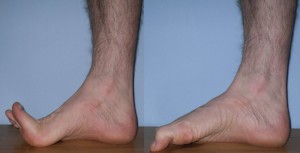This manoeuvre is performed standing with most of the subjects weight on the contralateral leg. The subject is requested to curl their toes and then relax on the command. This has the effect of raising the metatarsal heads and foot arch. This test causes activation of the foot muscle pump as well as the calf muscle pump. It does not require the participation of the examiner leaving a hand free to operate the controls of the ultrasound machine. It is not painful and nor is the test tiring for the subject. In contrast to other provocation tests, the leg remains stationary thereby lessening the chance of inadvertent movements from the transducer head.
ERIKA MENDOZA This test was proposed in 2001 as a standard test for inducing antegrade flow and reflux within the leg veins. It has been shown that the Wunstorf manoeuvre gives a very good antegrade flow impulse up to the level of the groin. This is because the foot muscles and deep flexors within the calf all contract at the same time. Furthermore, the test gives control over the exact time point when retrograde flow is tested which it when the subject is requested to relax. This can be useful in determining whether re-entry perforating veins drain above or below the knee. A modification of this test is hyperextension of the toes. Research is required in benchmarking this test against external compression manoeuvres.
